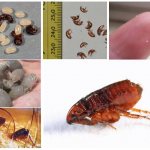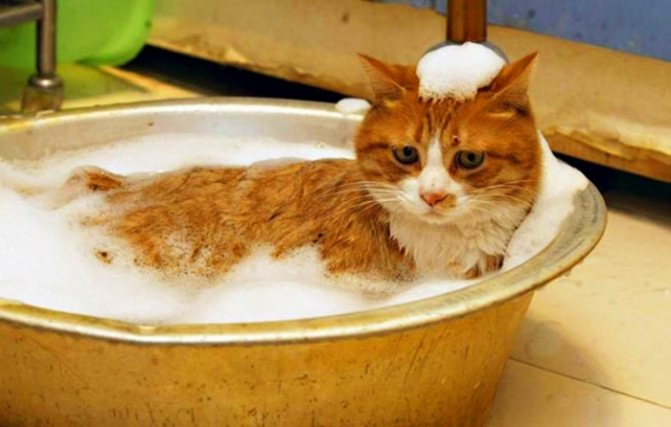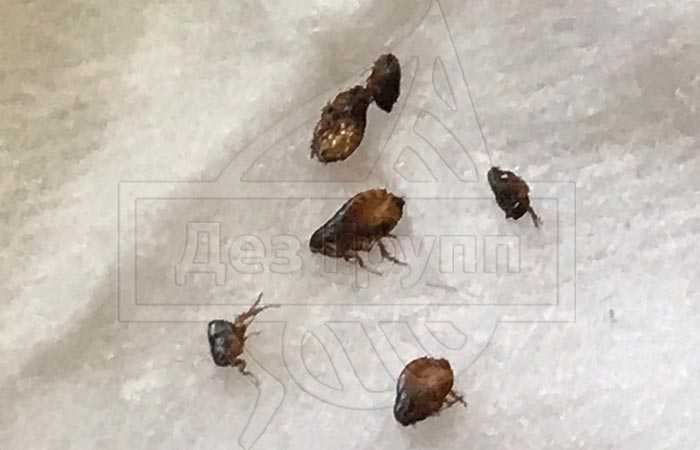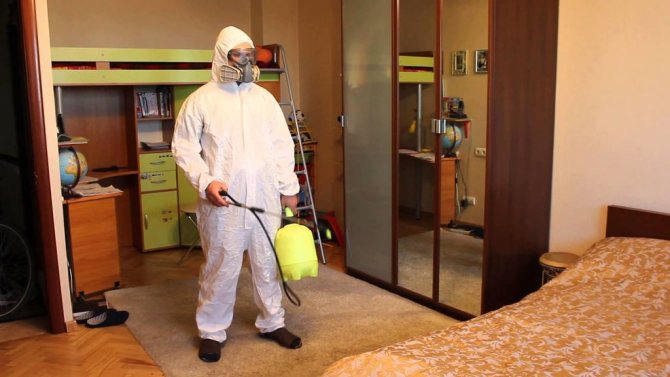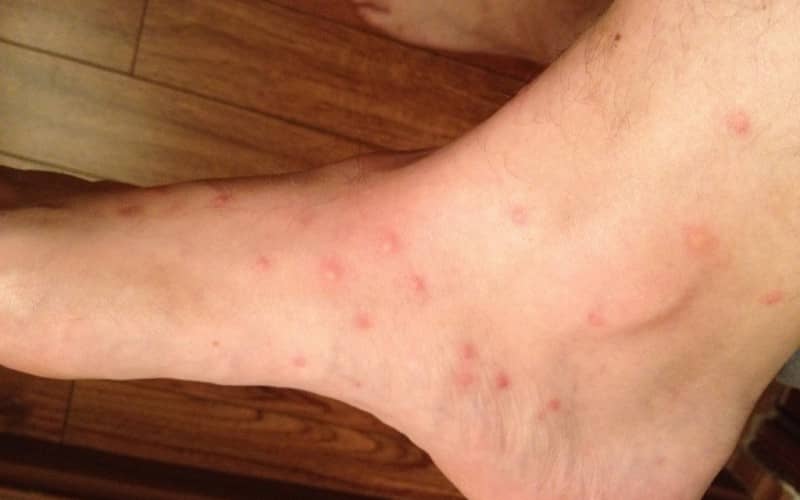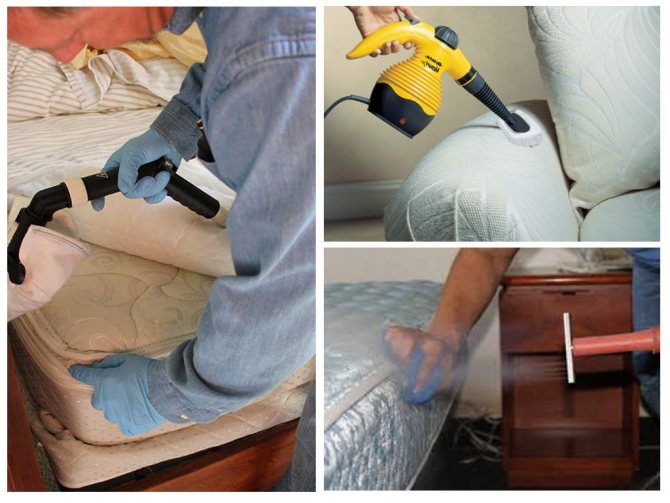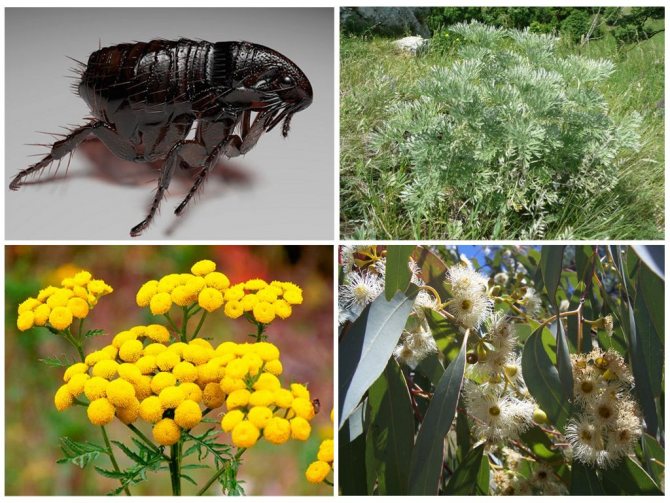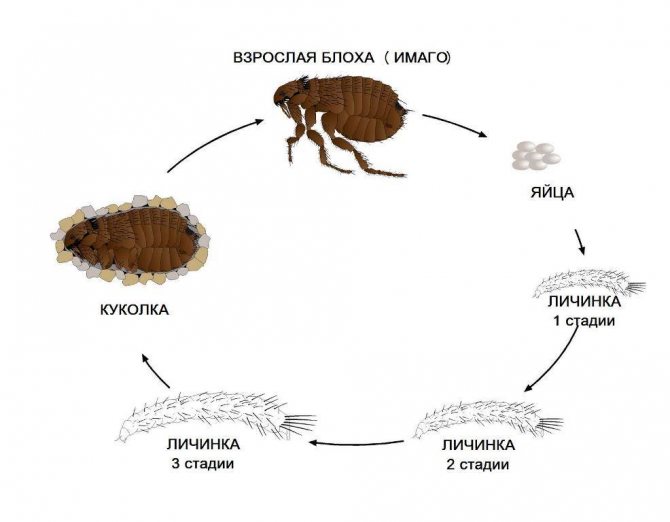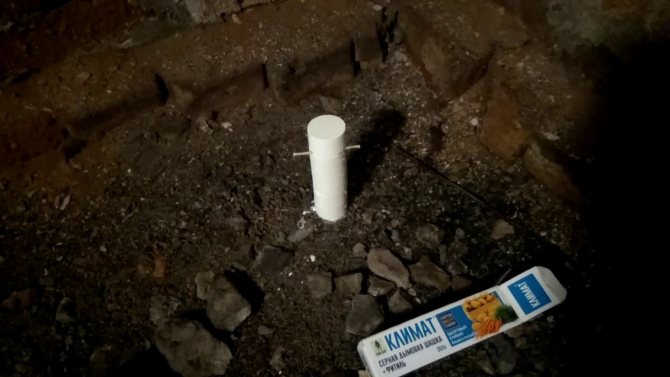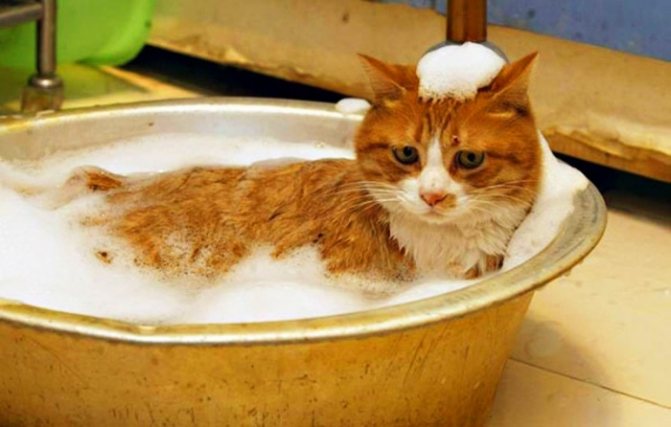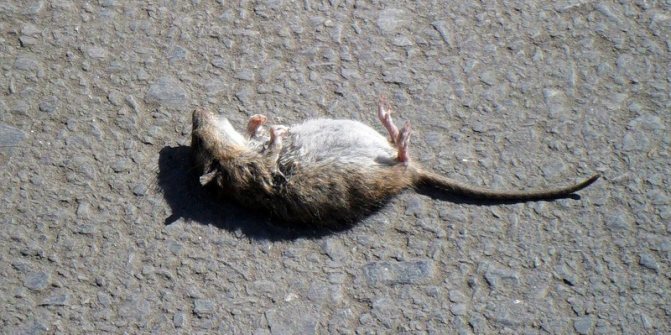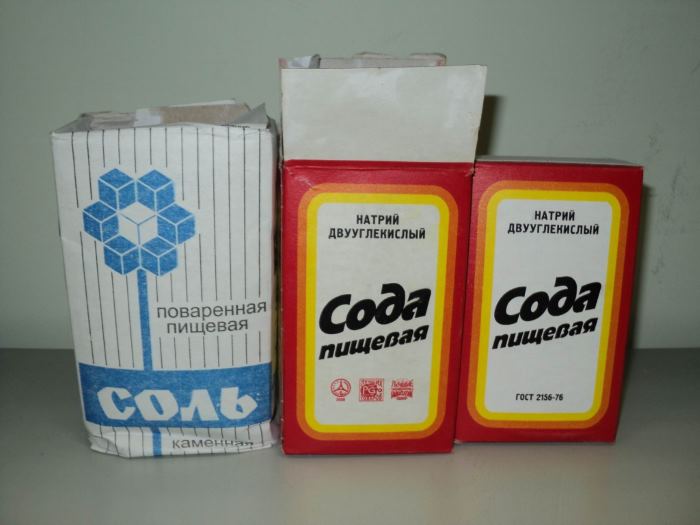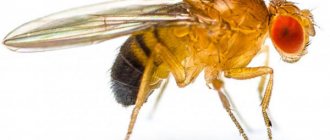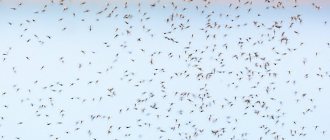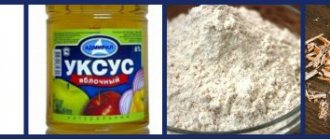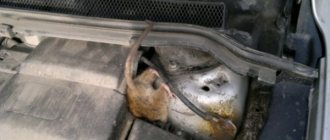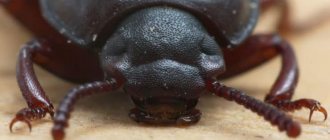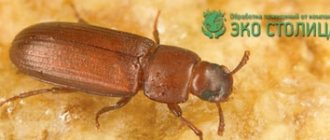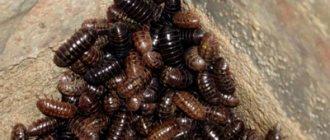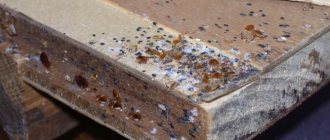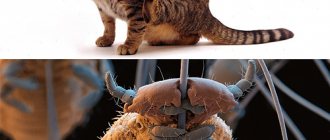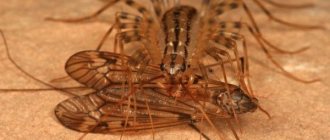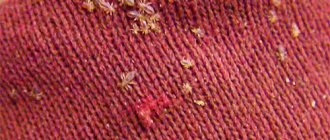Distinctive features of basement fleas
Fleas can appear in an apartment even if a person does not have pets, he cleans up and keeps the house clean. In this case, it is required to identify where the parasites came from in order to eliminate the source of occurrence.
Basement fleas that live on the basement can get to a person in a dwelling. In fact, these are ordinary bloodsucking, but they got this name because they need a damp, cool environment where there is dust to reproduce, so the basement is an ideal place for them. Insects find their food in the form of mice, rats, and other animals that live in the basement.
Such basement parasites are also called "earthen". They consume the blood of almost all warm-blooded animals, including human blood.
The danger of basement fleas entering the apartment is not only that they cause discomfort to people. Parasites bite not only humans, but also animals such as rats, which carry deadly diseases.
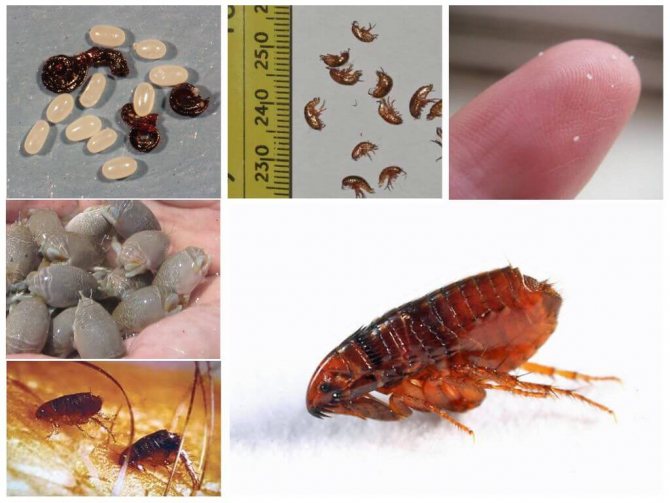
If the number of basement individuals has increased, they are looking for new food for themselves. Parasites are able to move quickly, jump on walls, steps and enter apartments not only on the first, but also on the second and third floors.
The nuances of parasitism
Pests do not hibernate and live on the body of their owners constantly. Basement fleas feed on the blood of their prey, and not only females, but also males are bloodsuckers. After eating, they can leave their owner or move to another animal. Earthen or basement fleas are not tied to a specific host. They eat with great pleasure the blood of not only animals and birds, but also attack humans. Most of all, pets suffer from them - cats and dogs walking in the yard and basement. In the absence of a sufficient amount of food, the parasites do not die, but go into hibernation. In this state, they can stay in the basement for up to 3 months.
Important!
Dirty, damp, unkempt basements and cellars are favorable breeding grounds for fleas.
The ideal conditions for the active life of basement fleas are:
- ambient temperature in the range of 17 - 27 ° C;
- relative humidity of the room within 70%.
How to spot basement fleas
To accurately determine the presence of parasites in the house, you should familiarize yourself with how to distinguish them from other insects that enter the house.
What basement fleas look like:
- The body color is brownish, yellowish.
- The size of the individual is 0.1 - 0.5 cm.
- The body is flat at the sides.
What is the difference between animal fleas and basement fleas - these insects have almost no differences. Parasites that live on a specific species of warm-blooded, in the absence of food, move to other animals, bite people, just like basement individuals.
How to distinguish between their bites:
- Unlike many blood-sucking insects, basement insect bites are painful and felt immediately, heal for a rather long time.
- The lesions are mainly visible on the calves, arms, and neck.
- The puncture sites are very itchy.
- In one place, you can see several bites at once.
- A swelling appears at the site of the lesion.
If there are pets in the house, it is recommended that you pay attention to their behavior. Signs of infection in a pet - the animal itches a lot, often flinches.
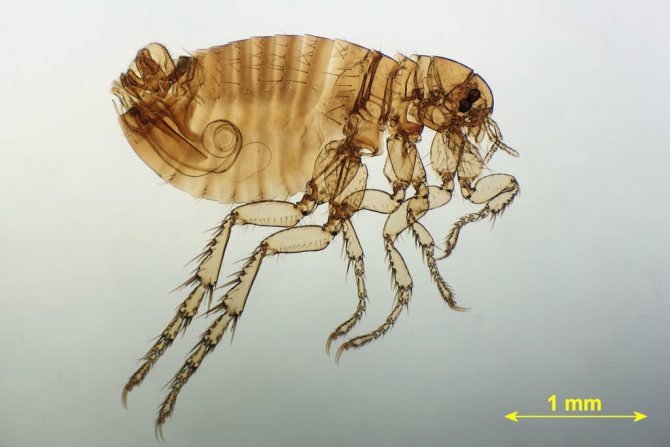

Danger to humans and animals
Most people are mistaken to think that fleas are safe for humans. Parasites cannot harm a person's health by drinking his blood. But the main danger of blood-sucking insects is not in the way of feeding, but in the spread of infection and the ability to cause allergic complications. During bites, insects inject an enzyme into the victim's body that prevents blood from clotting in the wound. The danger is that a foreign protein entering the wound causes stylish allergic reactions and can lead to loss of consciousness and respiratory arrest.
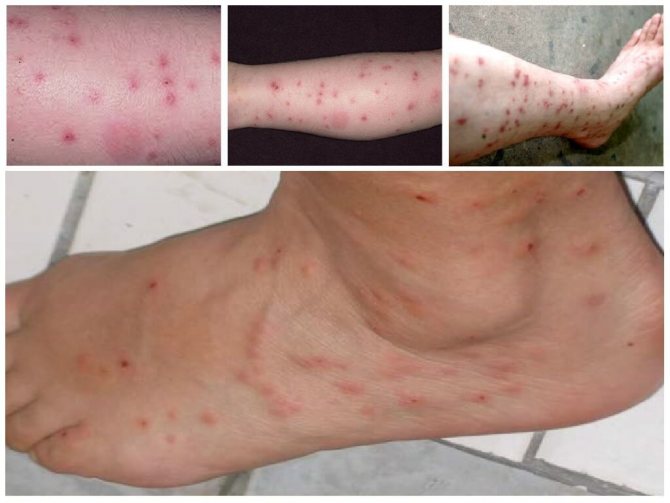

Flea bites
There are a large number of bacteria and helminth eggs on the claws and body of insects, so infections or microscopic tapeworm larvae often get into the wounds, and this threatens serious health consequences.
- heat in the body;
- itchy skin;
- rash and inflammation;
- headache and nervous disorders;
- heaviness in the chest, trouble breathing;
- diarrhea;
- stomach cramps.
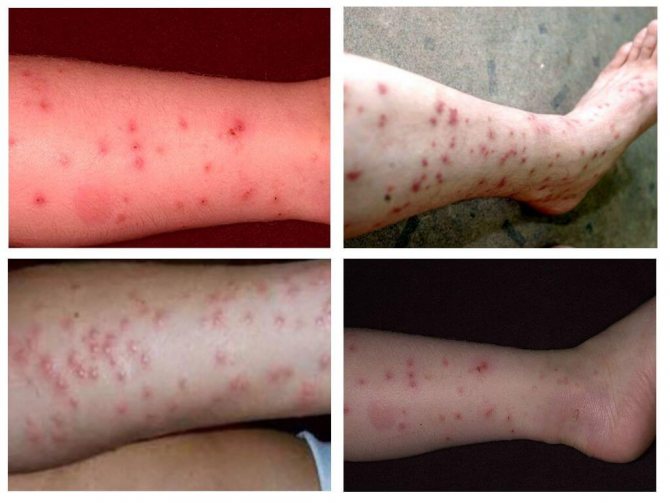

Flea bites
The bites of any basement flea are extremely dangerous. Arthropods are carriers of dangerous epidemics. Among the many infections carried by fleas, the most deadly is the plague bacillus. This lethal infection causes epidemics with a survival rate of less than 10%. In Europe, facts have been recorded when it was parasites that caused the extinction of entire cities.
In addition to plague, ectoparasites cause the spread of other infections:
- salmonellosis;
- hepatitis;
- encephalitis;
- tuberculosis;
- brucellosis;
- tularemia;
- typhus;
- anthrax.
For pets, parasites are not only an annoying concern, but also a threat to life. Insects carry the eggs of the worms and spread them over the skin and hair of the hosts. When combing bites, animals infect themselves with helminths, tapeworm larvae and tapeworms.
After the incubation period, the behavior of pets changes greatly, they become restless and often lose weight. In the future, the disease can lead to severe exhaustion and death of the animal.
The reasons for the appearance of fleas in the apartment
Parasites can appear even in a clean apartment, in which there are no animals. This may be due to the fact that there are insects in the basement of an apartment building that could have moved into people's dwellings to search for food.
Infection options:
- Through the cracks in the walls.
- Through ventilation ducts.
- Through street shoes and clothes.
The largest number of them in an apartment can be seen behind cabinets, in old things, carpets, as well as in the crevices of floors, upholstered furniture. Pets that go outside can also introduce parasites into your home.
How to recognize parasites
- the insect is difficult to detect, since its length is only 0.6 mm;
- body shape - flattened on the sides, and thickened in the abdomen;
- body color - brownish, sometimes light brownish or yellowish brownish;
- they can be found on the fur of pets, in the gaps between the skirting boards or platbands, as well as in the gaps in the floor. Being in such a shelter, they wait for their victim, and then jump on it to bite, drinking a drop of blood;
- bite sites are characterized by redness, severe pain and discomfort.
Preparation of premises for disinfestation
To get rid of insects if they got into the house from the basement, it is not enough to carry out pest control in the apartment. There is a possibility that after the destruction of fleas, they will enter the dwelling again from the basement floors.
Therefore, you will initially need to carry out the treatment of the basement from fleas. If the house is an apartment building, you should find out where to go to solve the problem. You can call the management company or discuss with the neighbors on the lower floors how to deal with parasites. It may be necessary to call a special service to carry out the processing of the basement room.
In a private house, you can disinfect the basement from fleas on your own or by calling specialists. Initially, all garbage and old things from the premises, if any, are taken out. In the case of the presence of rats or mice, you need to call the SES service to exterminate pests.
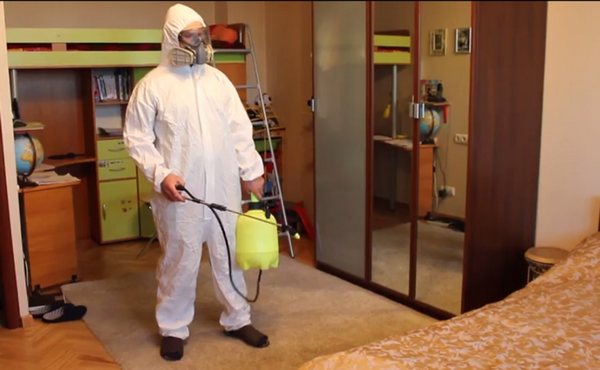

Fight
To the question of how to get rid of basement fleas in an apartment, we answer as follows - an integrated approach is needed, which includes the following activities:
- We destroy insects on pets.
- We will carry out the disinfestation of living quarters.
- We process the likely places of flea penetration into the apartment.
- We are baiting rats and mice.
- We carry out the destruction of fleas in the basement. In a private house on their own or hired by a service. In an apartment building, this work should be done by your management company.
- Equip your animals with flea protection collars.
Now let's move on to considering some of these points in more detail.
Removal on animals
To remove fleas from the body of pets, special basement flea remedies, which are sold in every veterinary pharmacy, will help. These are brands such as:
In addition, the animal can be washed with a special shampoo or a flea collar can be put on it.
Disinsection
To destroy fleas in an apartment, the same means are used as against other parasites. For example:
From folk remedies, you can list such effective herbs and drugs as:
- pyrethrum;
- tansy;
- wild rosemary;
- sagebrush;
- fir and pine needles;
- aloe juice - agave;
- aroma oils;
- spices such as rosemary, coriander;
- vinegar.
Dry herbs are laid out in the corners and next to the bed, and liquids are dripped over the alleged clusters of insects.
Rodent baiting
In the case of the spread of basement fleas from an invasion of rodents, it is precisely poisons that should be used, and not mechanical traps: mouse traps or Velcro. The fact is that poisons can destroy the entire population of animals.
As an example of the most effective poisons, we will cite such as:
Cellars
Basements in a private house are cleaned with the same means that we indicated for the treatment of living quarters. As for apartment buildings, the responsibility for disinsecting auxiliary premises lies with the management company, and the residents of the building have the right to demand that it fulfill its duties in full.
Interesting information that complements our today's reportage is contained in the video, which you can watch by clicking on this link.
A common problem often encountered by residents on the ground floors in multi-storey or private houses is basement insects - fleas. Animals and birds, as well as people, become victims of parasites. Clandestine flea bites are painful and cause allergies, individuals carry dangerous pathologies.
To get rid of parasites, it is necessary to poison fleas in the basement of an apartment building. Only in this case they will disappear from human habitation and will not reappear after disinsection.
Residential treatment
In addition to the basement, you will need to treat living quarters from insects. What actions need to be taken to get rid of parasites at home:
- Carry out a thorough wet cleaning - remove dust from surfaces, rinse the floors.
- Wash clothes, bedding, plush toys, curtains, and other textiles.
- Clean and vacuum carpets, pet beds;
When treating with basement flea products, there should be no animals, children, plants and food in the house. Before processing the home, you need to prepare protective equipment for working with chemicals - gloves, special clothing, eye protection, respirator.
A short excursion into biology
Classification
Fleas are a detachment of arthropod bloodsucking insects with complete transformation.They are secondarily wingless, since they lost their need and ability to fly in the process of evolution. In the adult phase, these insects are ectoparasites capable of transferring infections from host to host.
Our help! Ectoparasites are pests that live on the surface of the victim's body.
Currently, scientists have described more than two thousand species of these insects, which are divided into fifteen families and about two hundred genera. The most harmful of them in medical and economic terms are allocated in the category of "common fleas", these are such species as:
- human flea;
- rabbit;
- canine;
- feline;
- rat.
Description
The smooth body of fleas is compressed on the sides and has a number of bristles with which the insect clings to the hairs or feathers of its host. The body length varies from one to five millimeters, in rare cases it grows to a centimeter in a female saturated with blood.
Fleas have a special structure of the oral apparatus, which biologists call piercing-sucking, due to which insects have no mandibles.
Our help! Mandibles, or mandibles, a paired oral apparatus - an analogue of the jaws in animals, designed for grinding food.
Three pairs of legs, strong for its weight, grow from the insect's chest, with the help of which the flea is able to move quite quickly. Fleas often jump, using the middle pair of legs for short jumps, and hind legs for the farthest jumps.
Lifestyle
Fleas do not hibernate, but live on the bodies of their owners all-season. They are also found in the nests of animals and birds. Particularly strong colonization is observed during the period of incubation of eggs in birds and the birth of offspring in animals, since during this period the nests and burrows are characterized by high humidity and warmth.
In summer, you can often see a picture of how animals and birds bathe in dust or wood ash. In this way, they get rid of parasites, including blood-sucking fleas. This picture is most familiar to rural dwellers and poultry farmers from the behavior of their favorite chickens.
A separate part of flea species does not leave the body of an animal once inhabited at all. This happens with the parasites of those animals that do not have permanent shelters.
Food
Fleas feed on the blood of their host. Unlike mosquitoes, not only females, but also males are bloodsuckers here. For different species, the saturation process occurs in different ways. Some rarely suck blood, but in large quantities, so that they cannot even completely digest the entire amount of sucked blood. Other species prefer to eat often in small doses.
After eating, fleas most often jump from the owner or move to another animal, but there are those that remain faithful parasites. After saturation, these creatures do not leave the owner, but freely crawl between his feathers or hairs.
Spread
Despite the thermophilicity of the flea as a detachment as a whole, it is distributed over all continents of the earth, it is found even in Antarctica on the body of penguins. But the main settlement of these insects still occurs in areas with a mild and humid climate, reminiscent of our basements.
Reproduction and generation cycle
Fleas are insects with complete transformation; after mating, the female lays eggs most often directly on the host's body, shooting them from her abdomen. In rare cases, laying is carried out in a warm place in the nest of an animal or bird.
Our help! The complete transformation of an insect includes four stages of development: egg, larva, pupa, imago.
Thanks to the warmth of the host, the eggs are incubated in just two weeks. The hatched larvae live in burrows or nests, but they can also be found on the host's body. They feed on a variety of decaying debris, including their parents' droppings with undigested blood.
After three molts, the larva begins to cover itself with a silky cocoon, in which it soon pupates.
Interestingly, the release of an adult insect from the pupa in different species is timed to a certain season. Nature has calculated so that during hatching, these parasites can find themselves a new host.
An adult insect - an imago - according to biologists' calculations, can live up to one and a half years, but in reality their life cycle is limited to two or three months.
Treatment of penetration points
To reduce the likelihood of individuals entering the apartment again, it is recommended to carry out additional processing. One of the popular basement flea remedies is special crayons. They contain insecticides that kill insects.
The tool processes the thresholds to the apartment, ventilation passages. Minus crayons - they are toxic and can harm the health of animals, children in contact with the product. In the basement of a private house, you can additionally apply dust - the agent effectively fights against blood-sucking insects.
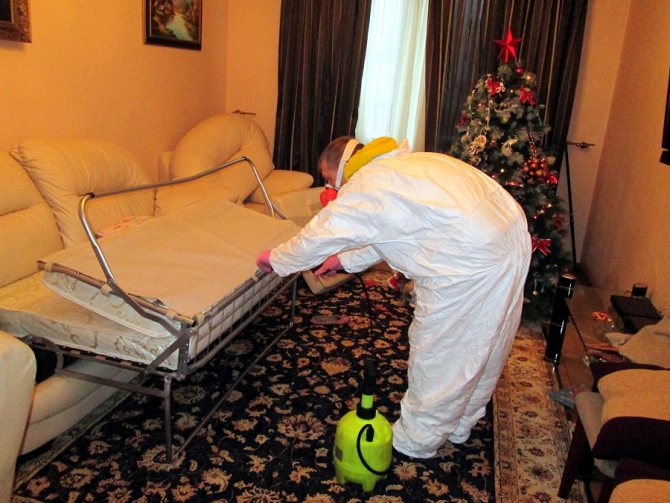

Flea treatment
To get rid of pets from fleas, you can use several of the most common remedies, for example:
- drops;
- shampoos;
- pills;
- collars.
Flea drops
This tool is considered one of the most effective and convenient to use (for example, "Bars"). Processing should be done once a month. To carry it out:
- Do not wash the animal with shampoo 2 days before the procedure.
- Fix your pet well so that it does not twitch.
- Spreading the coat, apply the drops to the skin in places where the animal cannot reach to lick them off, best of all on the withers. Drops are absorbed after 12-24 hours.
You must not bathe your pet for two days after treatment! The amount of the drug should be calculated by the weight of the animal in order to avoid an overdose (if the weight is less than 1.5–2 kg, the agent cannot be used). Most of the drops are undesirable if the pet is less than 8 weeks of age, is expecting offspring or is feeding it.
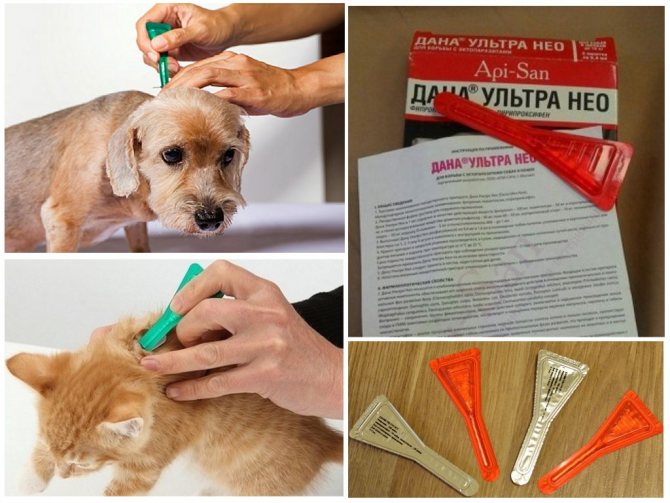

Flea drops are the most convenient and effective remedy in the fight against fleas
Flea shampoos
This remedy is loved by many animal owners because it can be used both as needed and to prevent the appearance of fleas without special precautions (for example, Celandine, Lapushka).
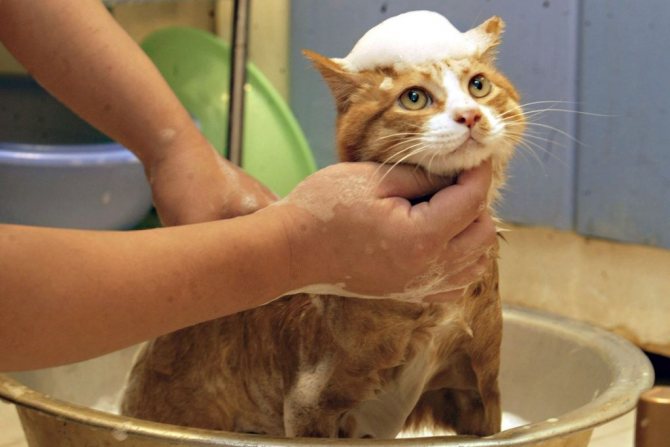

Bathing with flea shampoo is very convenient for frequent use, especially after walking outside
For shampooing:
- Warm water (40–45 degrees) is collected in a basin or bath.
- They sit or put an animal in a container and hold it tightly.
- The pet is thoroughly moistened with water and the agent is applied to the entire coat, while protecting the eyes and ears from the drug.
- The shampoo is left on the animal for the period of time specified in the instructions, most often for 10 minutes.
- The product is washed off, protecting the eyes and ears from water.
- The animal is taken out of the water and wrapped in a towel or wiped with it.
After 2 days, examine your pet for fleas and a possible allergic reaction. If the parasites remain, you will have to wash it again. When choosing a shampoo, be guided by the health status of the animal, age, pregnancy or lactation.
Flea pills
Insecticidal tablets (for example, "Comfortis") act already a couple of hours after ingestion. Their duration ranges from 4 to 12 weeks. The product must not be applied to animals under 8 weeks old and weighing less than two kilograms. Contraindications are indicated in the instructions for a specific drug.
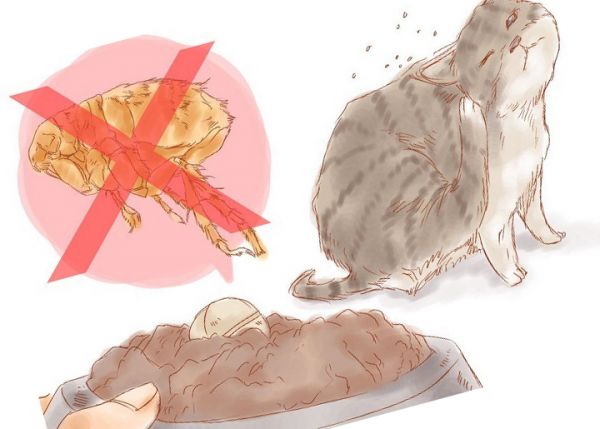

For comfortable use, flea tablets usually have a bright smell of meat products.
Collars
This device constantly releases toxic substances on the skin and wool, which are not absorbed inside, but diverge through the subcutaneous fat. Collars can both repel and kill parasites, mainly paralyzing their nervous system. They work from 2 to 8 weeks.
The most popular are:
- "4 with a tail";
- "Leopard".


Medicines used in a flea collar can cause severe allergic reactions
You can put on a collar mainly from 8 weeks (a device impregnated with essential oils - from 4 weeks) or after reaching 2 kg weight. In some animals, the product can cause an allergic reaction in the form of:
- local irritation and itching;
- anxiety and depression;
- drooling;
- shortness of breath;
- vomiting.
In this case, the device is immediately removed, and the pet is washed with zoo shampoo. Do not allow body contact of a pet with a small child until the drug dries or is completely absorbed!
Photo gallery: remedies for fleas in animals
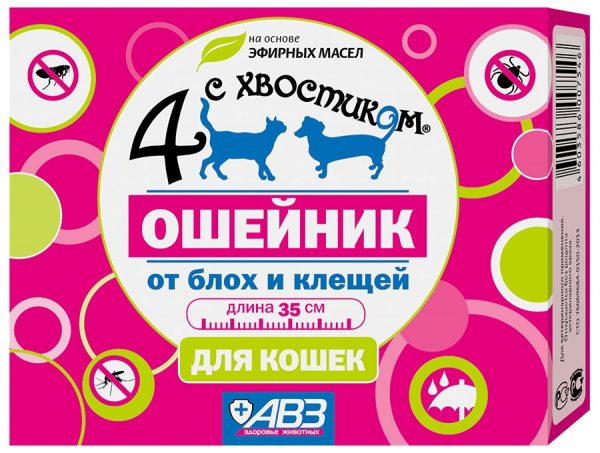

Collar "4 with a tail" is flea repellent
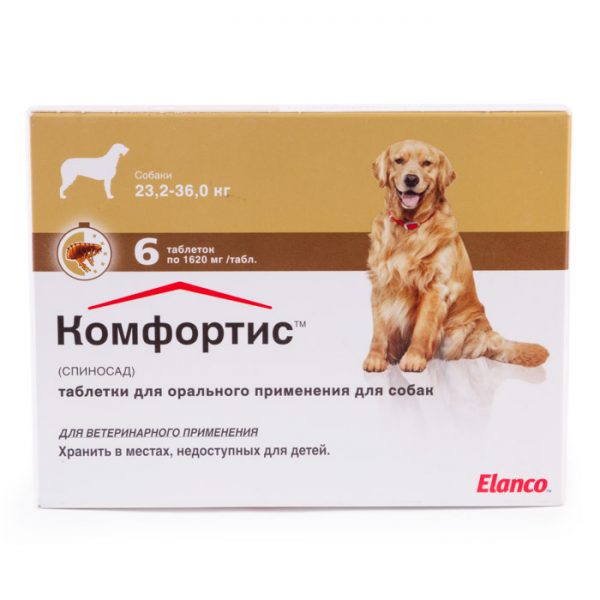

"Comfortis" tablets are used for the prevention and treatment of fleas
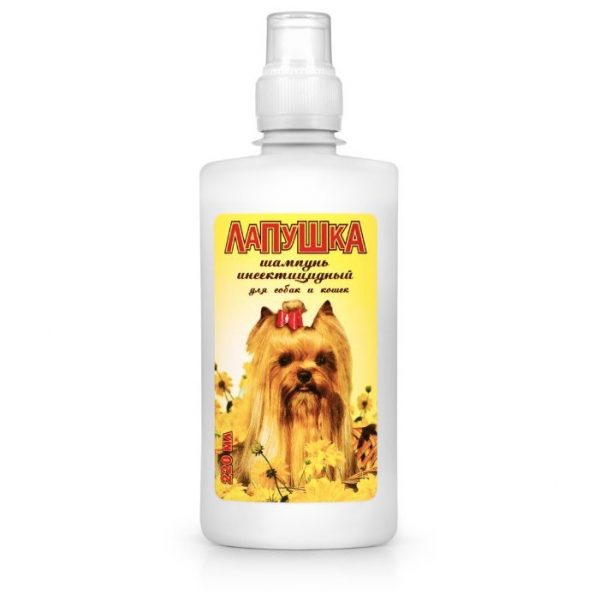

Shampoo "Lapushka" contains synthetic pyrethroid permethrin as an active ingredient.
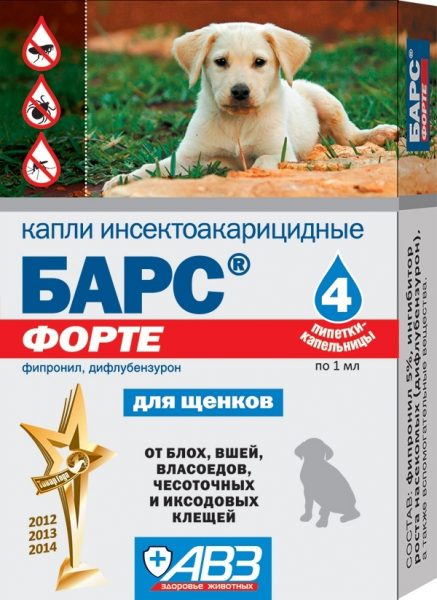

Bars drops are an effective remedy for fleas.
Basement bullying
The chance to remove insects from the basement of a private house will increase if the source of food for insects is eliminated. Basements can be home to rats and other pests that carry blood-sucking parasites. To get rid of rodents, you need to call a special service.
If the house is not private, but multi-storey, you should contact the communal service to organize pest control. To eliminate insects in the basement, more toxic agents are often used than in living quarters, which are most effective. After eliminating small rodents - sources of parasites, as well as existing larvae, fleas probably will not reappear.
Where do they come from?
Fleas get into the dwelling in several ways.
- They climb out of the basement through ventilation or crevices. This is especially true for multi-storey buildings, in which there is usually no master's view of all the utility rooms.
- They are brought by pets after a walk, where contact with an infected animal is possible.
- On items of clothing or shoes when visiting insect-infested places, especially for people associated with work in basements and other damp and dirty places.
Attention! Basement fleas are carriers of many dangerous diseases. They cause human infection with plague, hepatitis, brucellosis, salmonellosis, encephalitis and some others.
Effective methods of struggle in the house, apartment, basement
To combat basement parasites, chemicals are used, as well as folk remedies. The first ones are relevant in case of severe contamination of premises, they allow you to eliminate individuals in a short time. Traditional methods are used mainly as a prophylaxis for the penetration of insects into the house, however, they can be used in combination with insecticides.
Chemical insecticides to eliminate basement fleas
Modern preparations allow you to get rid of insects in a short time. Before working with substances, you should study the instructions in detail and prepare protective equipment for the eyes, respiratory system, and skin.
What remedies are flea poison:
- Dobrokhim FOS concentrate - active ingredient - fenthion.
- Xulat - works due to chlorpyrifos.
- Confidant is a concentrate, the active substance is imidacloprid.
- Biocifen - contains fenthion, cypermethrin. Available in powder form.
- Contra Insect - contains permethrin, which kills crawling parasites.
- Karbofos is a concentrate containing malathion to get rid of crawling insects, flies, mosquitoes.
- Concentrate K-Otrin - active substance - deltamethrin.
- Powder (dust) Green House - acts due to fenitrothion, cypermethrin.
- Concentrate Duplet - contains alpha-cypermethrin, karbofos.
The substances should be used in the absence of people in the room without special protection, animals, plants. Funds must not come into contact with food.
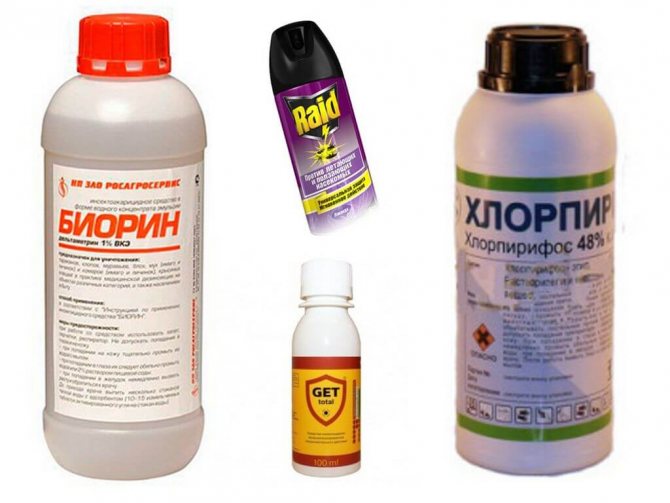

Folk remedies
Available products that are used in the fight against insects are salt and soda. It is necessary to mix the substances and process carpets, upholstered furniture with these components. Special attention is paid to skirting boards. After 7-12 hours, the product, along with the dead individuals, is removed with a vacuum cleaner.
To repel insects, repellents are used:
- Essential oils of eucalyptus, tea tree.
- Dry flowers of tansy, wormwood, chamomile, mint leaves.
- Tar soap.
- Vinegar.
- Tincture of hellebore roots.
These remedies prevent the appearance of bloodsucking, however, have a weak effect compared to chemicals.
How to remove larvae and destroy flea eggs
It is not easy to remove insects if they have been living in a dwelling for a long time - insects multiply quickly and lay eggs in secluded places. Larvae are less susceptible to certain drugs than adults. Therefore, there is a risk of basement parasites appearing again after primary treatment.
It is recommended to re-process the housing some time after the first disinfestation. All surfaces, crevices and other secluded areas must be thoroughly cleaned.
Preventing the appearance of basement fleas
Since basement insects enter the dwelling from the basement floor, they must be prevented from breeding in this room. It is necessary to carry out disinfestation 2-3 times a year by calling special services, and also keep the living quarters clean. All gaps in the floor, if any, should be repaired, as well as ventilation passages.
Basement fleas are dangerous to humans, as they carry diseases. Basement processing will allow you to destroy individuals. Regular pest control and cleaning of living quarters prevents insects from entering the house.
How to treat bites
Flea bites have been known to cause anaphylactic shock. Therefore, for safety reasons, it is better to take an antihistamine (fenistil, suprastin).
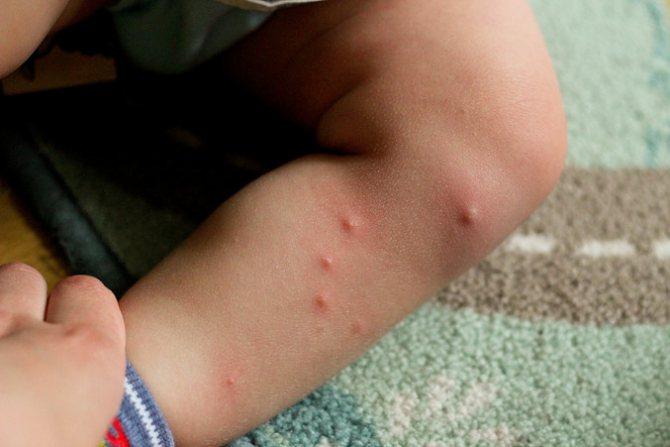

If fleas have bitten a child, then taking antihistamines is required, since children are more susceptible to allergic reactions than adults.
First aid
In order not to provoke the development of inflammation at the site of the bite, after taking the medicine for allergies, it is necessary to treat the affected surface as soon as possible.
- We wash the affected areas with antibacterial soap or disinfectant solution. You can use an aqueous solution of peroxide, miramistin, potassium permanganate or chlorhexidine.
- If a large area is affected by bites, then each wound should be lubricated with an aqueous solution of apple or lemon juice (1: 1) in order to heal the skin faster.
- To relieve itching, we use corticosteroid creams or ointments (flucinar, hydrocortisone, advantan), which inhibit the formation of substances for progressive inflammation. Or proven folk remedies: ice cubes from a decoction of calendula, chamomile, wormwood, wrapped in a cloth.
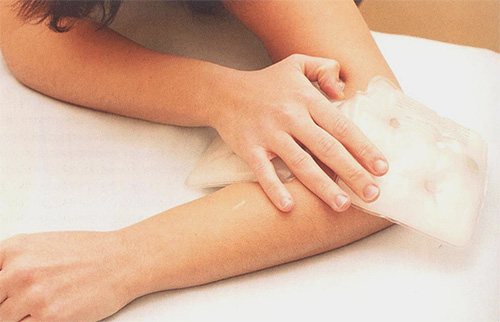

A cold compress will help relieve itching
Therapy
The appropriate treatment for allergies, inflammations or infections will be prescribed by your doctor. Most often this is taking antihistamines and treating wounds:
- alcohol solution (the proportion is determined by the doctor);
- Fenistil gel;
- Boro-plus cream;
- balm Zvezdochka.
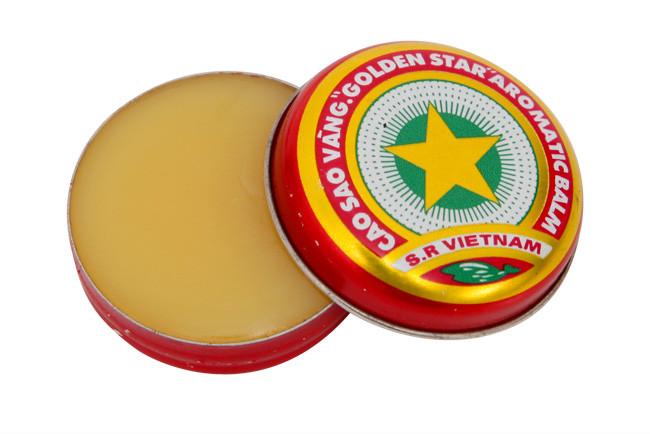

Balm Zvezdochka relieves irritation and swelling
It is interesting. For children, before contacting a specialist, it is imperative to apply a bandage to the affected area after initial treatment in order to minimize the risk of scratching.
Alternative treatment
If the bites did not provoke complications, then traditional medicine can be dispensed with.
Aloe lotions
Instructions:
- Twist the leaves in a juicer or meat grinder.
- We filter the juice, apply it to the itchy areas.
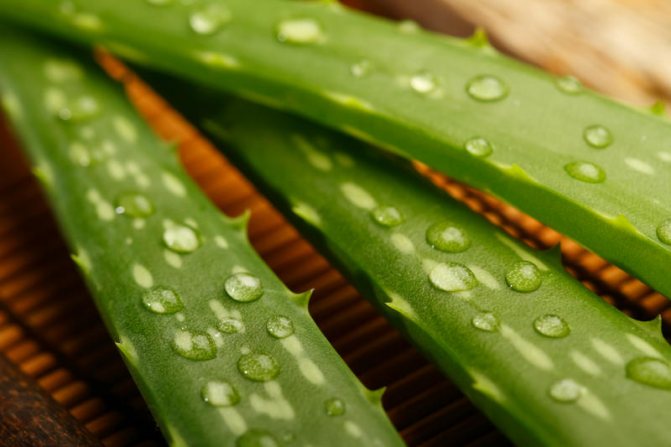

Aloe juice relieves itching and inflammation
It is interesting. Instead of or together with aloe, plantain, calendula can be used.
Green tea wash
Instructions:
- Brew 1 tsp. leaves 200 ml of hot water.
- We insist 8-10 minutes.
- Cool, drain the liquid. We wash the problem areas.


Green tea has an antiseptic effect
Garlic appliques
Relieve swelling and inflammation.
Instructions:
- Rub 2-3 cloves of garlic on a grater.
- We apply the gruel to the bite site.


Garlic quickly relieves inflammation
Soda solution
- At 1 st. We take 1 tsp of warm boiled water. soda.
- We wash the wounds 2-3 times a day.
It is interesting. It is very useful to periodically lubricate the wounds with fresh celandine juice.

